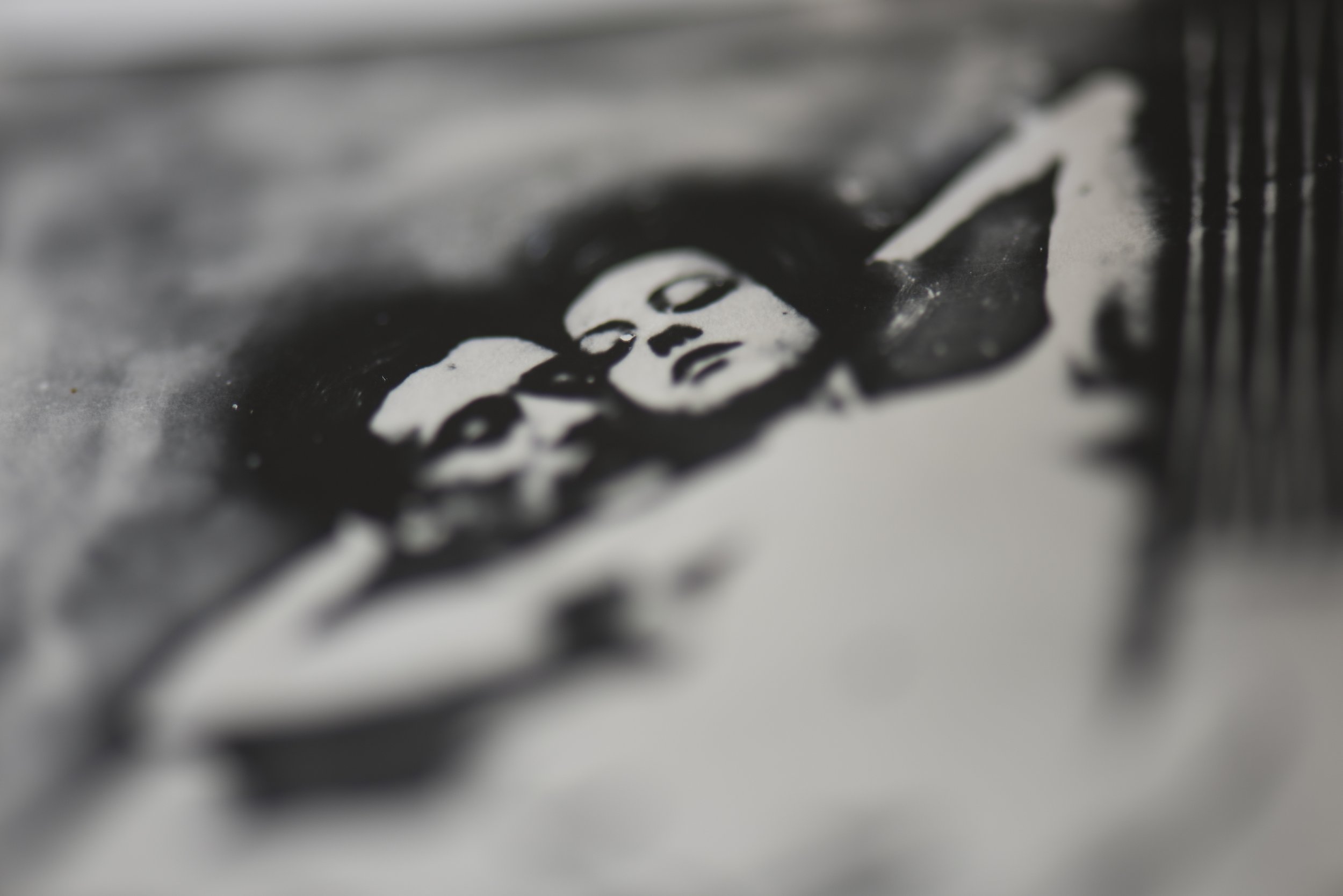Looking at a photo, looking at it again, looking at it in a different way, refocusing it, reframing the image, revising its discourse, understanding it, taking it out of context… all of this is an exercise that I repeat a thousand times over. I think about time, about space; I imagine the moment and I continue looking, patiently. I look at encyclopedias, newspapers, magazines, albums, taking photos of all the photos; I analyze, look over the photographs, retracing them from the image to my eyes, imagining that the camera is a twenty-centimeter tunnel through time.
Days, months go by and I do nothing more than look and look again. I buy seventy pornographic photobooks from the ‘50s. I discover that the pornographic photos from that era, the photos from newspapers and magazines, the photos from encyclopedias were taken from the standpoint of a man.
I stop imagining; I start to remember each book, each text, and each image that passed before my eyes when I was a little girl, in school, at the library, in the newspaper that was delivered to my home, in the incontrovertible encyclopedia: all of it was from a man’s point of view.
They say that history is written by the victors. I begin to narrate it, to comment on it, to refute it. History is not just the history of man, and the truth has no victors. History from the viewpoint that was kept silent, the other gaze upon the world: that is the history of which I wish to speak.
Astrid Jahnsen
What is Behind the Gaze -
Carlo Trivelli
Memories and archives: these are simultaneously matters for reflection and catalysts in Astrid Jahnsen’s most recent artistic undertakings. The outcry against being forgotten, the salvaging of memory, and the construction of a new relationship with the past have all been waypoints along a path that began with an unassuming search for the past, as hidden in documents, and has ended up being an interpellation of the documents themselves.
In “Reencuentro” (“Reencounter”), a package of negatives bought almost at random on the Internet led the artist to reconstruct the history of an iconic neighborhood in the district of Rímac before it practically disappeared due to the construction of the Santa Rosa Bridge in the early 1960s. In “Revelados” (“Development”), Astrid created a series of life-sized effigies of some of the subjects photographed by Eugenio Courret, who then she took to the streets of downtown Lima to protest against their being forgotten. Meanwhile, in “Fotografía Central” (“Central Photography”), she captured the inside of Courret’s studio as it looks today, but using the old wet collodion process—which Courret himself employed when he took his first photos in Peru—to establish a metaphorical bridge between the lost past and the present.Over time, however, Astrid’s gaze has become more penetrating and she has begun to look beyond the immediate. While nearly any old photograph or any old book can be a potential starting point from which to reconstruct the past, that reconstruction can be undertaken in different ways. Depending on one’s disposition and the tools available to pry the past from the grip of the documents that conceal it, that which is actually revealed by these documents can differ greatly.Astrid would begin to discover this notion while rephotographing old, anonymous photos she had bought in bulk at the flea market, or the prints that illustrate the pages of last century’s now-outmoded encyclopedias. Photographed using a macro lens, whole sections of these images are rendered blurry while leaving just a handful of details in focus. This effect not only allows the artist to choose specific aspects of the photographs—the figures swirling in the background, a random poster that barely forms part of the general décor; but, by blowing them up to the point of exaggeration, the macro lens also reveals the grain of the photo paper and the dots of the printer matrix—that is, the warp and weft of the image as a physical object: a set of dots that our perception unifies and converts into units of meaning.This way of looking through the macro lens becomes a metaphor for a truth that is evident, but which we tend to overlook: that if you look close enough, you will discover just how things are made. Implemented on the conceptual plane, this visual tool reveals documents’ ideological underpinnings: seen from close up—i.e., using the appropriate critical tools—documents reveal their seams. The prejudices, preferences, distortions, and injustices inherent to all perspectives start to become obvious.
In On Your Knees, in particular, what Astrid’s gaze reveals to us is the creation of desire and the sexually desirable through the male gaze, and, of course, through the absence—if not to the detriment—of the female gaze. A set of over eighty handmade booklets with contents situated somewhere between the erotic and the pornographic expose the way women are subjugated by the male gaze: bringing them to their knees, according to an apt quote that Astrid has highlighted in one of the stories narrated in the series’ images
Let’s not fool ourselves, though. We are not talking about a power exercised solely in the domain of the explicitly sexual. What Astrid is talking to us about here is a power that is exercised in every sphere; what she teaches us to see is that any document, upon closer inspection, will reveal to us the role that women (do not) play in history’s narrative or their participation in science, art, or politics—to name just a few examples—as retold in every history book and every encyclopedia. On Your Knees is just one specific case through which Astrid Jahnsen is able to show us a much larger truth. Now that our eyes have been opened, it is up to us to actually see.











